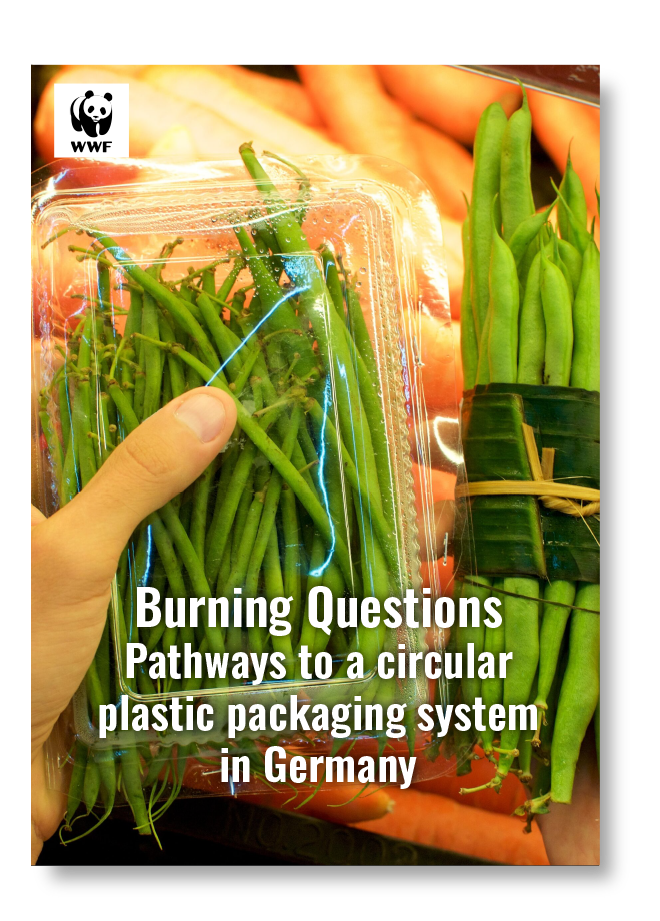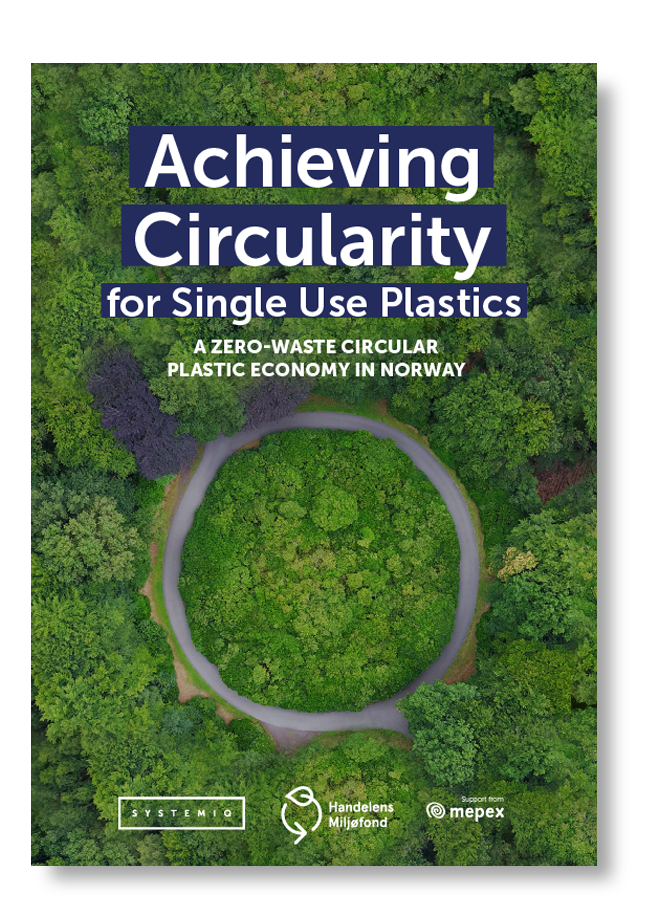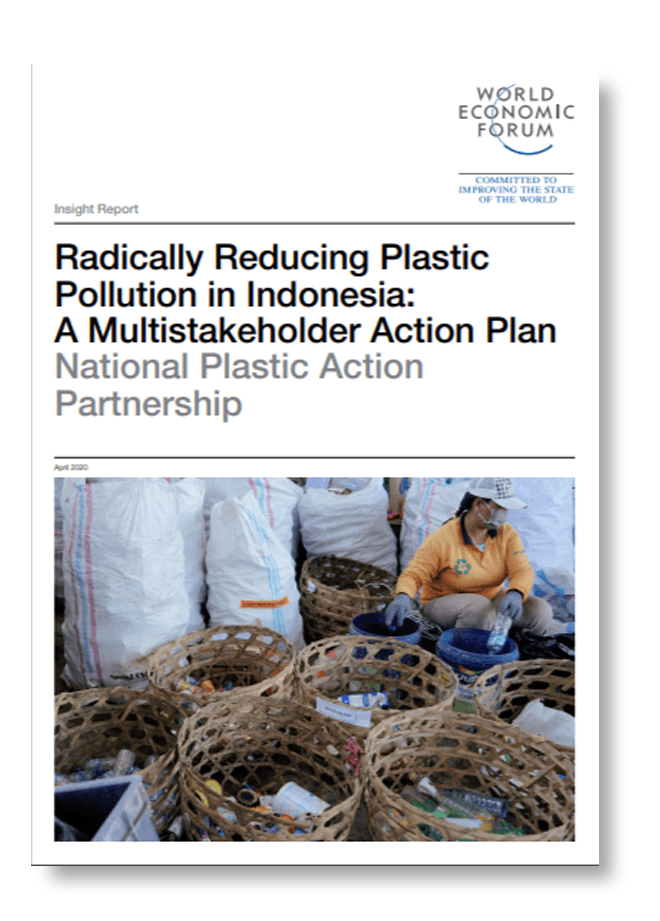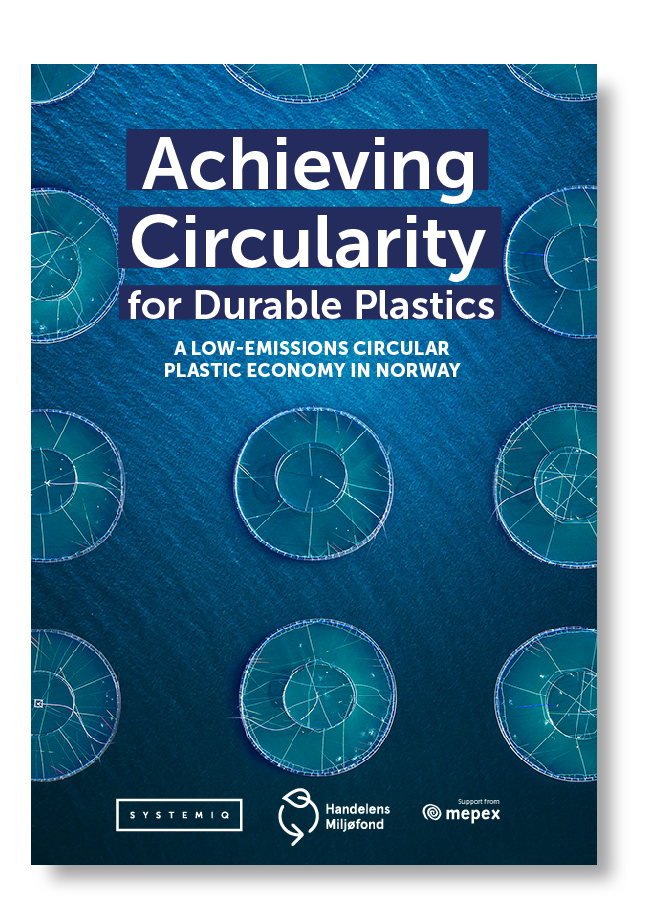This Synthesis Report and the two full reports that make up the “Achieving Circularity” series provide a comprehensive view of the Norwegian plastic system, offering a pioneering vision of how to transition it into a low-emissions, resource efficient, highly circular system over the next two decades.
Conclusion
Despite the many challenges and complexities this transformation entails, this study demonstrates that circularity interventions can achieve unprecedented levels of resource efficiency across all sectors, and provide an affordable and scalable means of dramatically reducing GHG emissions.
The analysis shows that the solution must go beyond reusing and recycling plastic, and also focus on fundamentally “rethinking” the uses of plastic through new business models and dematerialisation. Also, it shows the importance of establishing system transition principles along the
value chain between upstream circularity, downstream circularity, and supply side abatement to ensure interventions are prioritised, incentivised and championed in the most effective way to guarantee an efficient system (see Exhibit 11).
EXHIBIT 11
The yearly Norwegian per capita plastic disposal footprint has to reduce to 41kg per year to get on a net-zero pathway
All figures per capita. Norway population: 2020 5.4M – 2040 6.2M (projected)
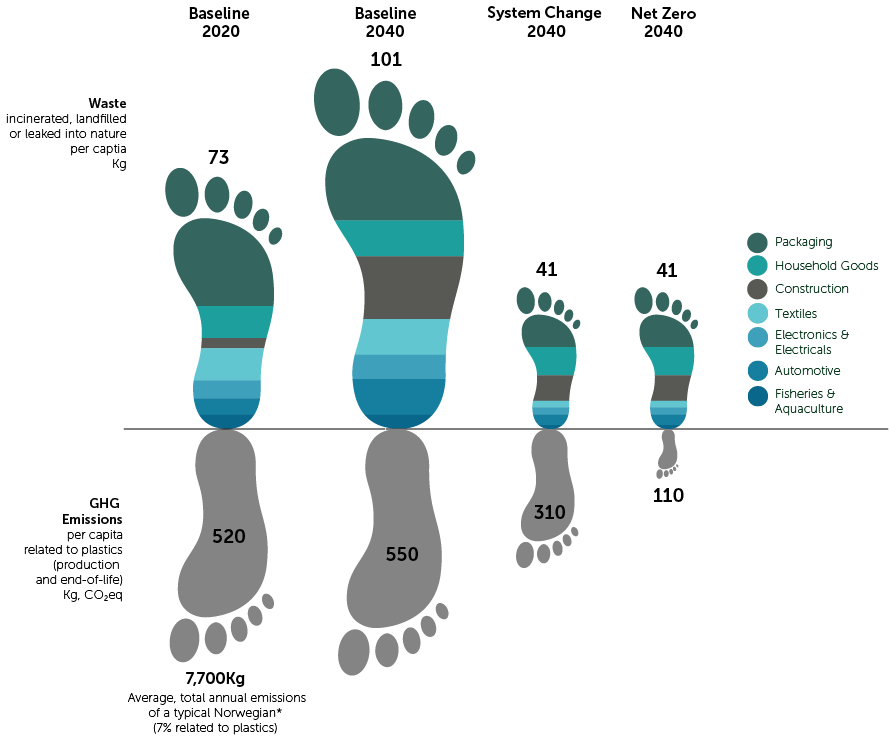
* Waste incinerated, landfilled or leaked into nature
The Norwegian plastic system faces important decisions that will determine the role it will play in the global transition to high circularity and low-emissions.
Norway has the opportunity to create a plastic system that is compatible with planetary boundaries and that can fulfil the needs of future generations of Norwegians.
A system that the world needs to be shown is possible, not simply as a means of mitigating harm but as an opportunity for future growth and innovation.
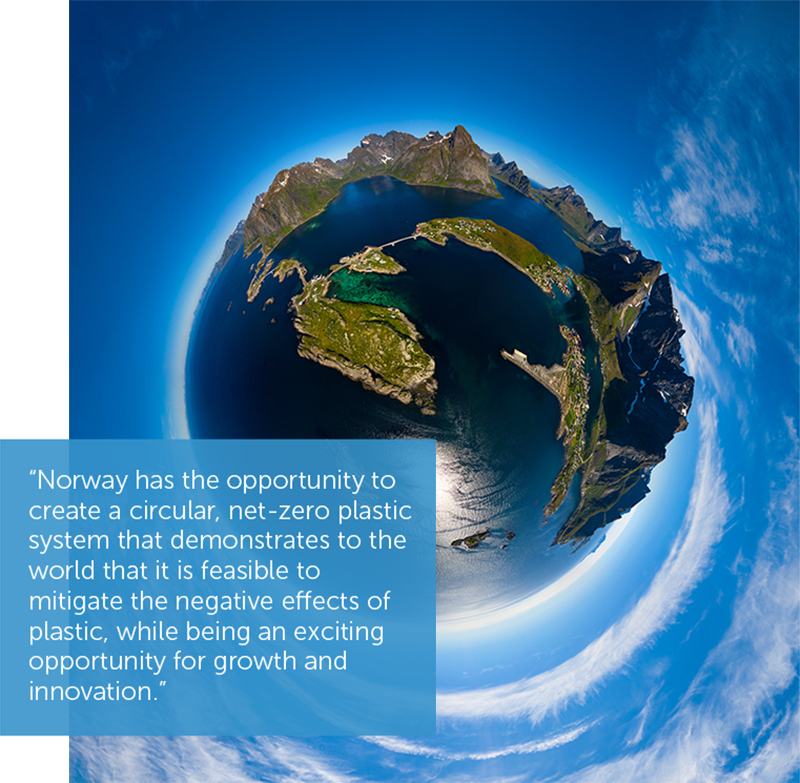
Contact
We would be happy to discuss or present the insights from the ‘Achieving Circularity’ studies in more detail. Please contact the team at [email protected]
Glossary
There is a glossary of terms used in this study available here >
Further Reading
This study is part of the Breaking the Plastic Wave series
Bibliography
- Energy, M. of P. and. Renewable energy production in Norway. Government.no https://www.regjeringen.no/en/topics/energy/renewable-energy/renewable-energy-production-in-norway/id2343462/ (2016).
- World Bank. CO2 emissions (metric tons per capita) – Norway | Data. https://data.worldbank.org/indicator/EN.ATM.CO2E.PC?locations=NO.
- Flaws, J. et al. Plastics, EDCs & Health. (2020).
- A European Green Deal. https://commission.europa.eu/strategy-and-policy/priorities-2019-2024/european-green-deal_en (2021).
- UNFCC. The Paris Agreement. (2015).
- UNFCC. Glasgow Climate Pact. (2021).
- European Commission. Regulation on Packaging and Packaging Waste. https://ec.europa.eu/commission/presscorner/detail/en/qanda_22_7157 (2022).
- European Commission. Directive (EU) 2019/904 of the European Parliament and of the Council of 5 June 2019 on the reduction of the impact of certain plastic products on the environment. https://eur-lex.europa.eu/eli/dir/2019/904/oj (2019).
- VinylPlus. VinylPlus Progress Report 2021. VinylPlus https://www.vinylplus.eu/resources/new-vinylplus-progress-report-2021/ (2021).
- Norwegian Parliament. Norway’s long-term low-emission strategy for 2050. (2019).
A full list of sources can be found in the Achieving Circularity for Single Use Plastics and Achieving Circularity for Durable Plastics reports.



